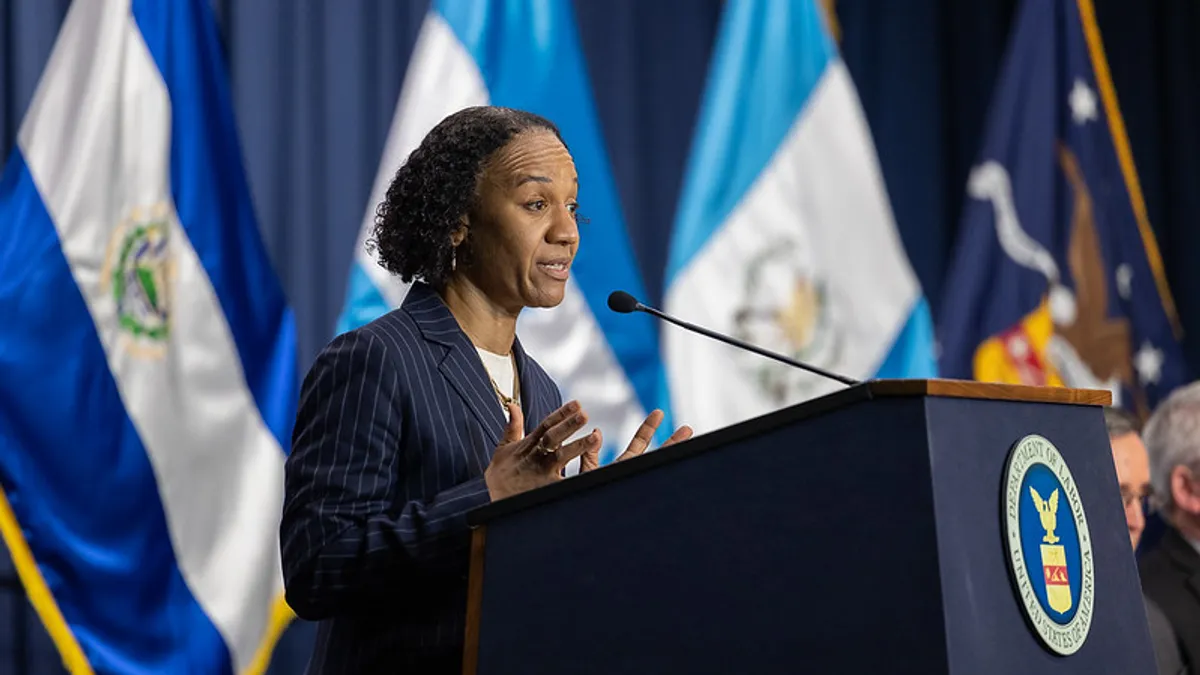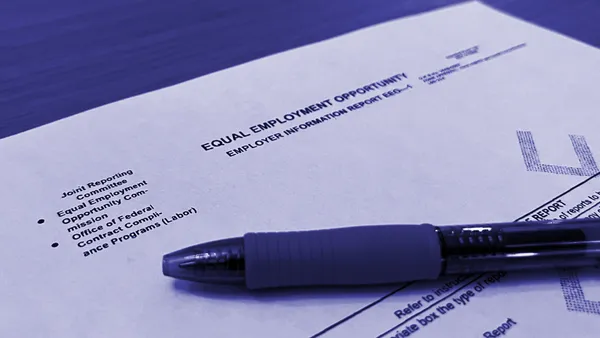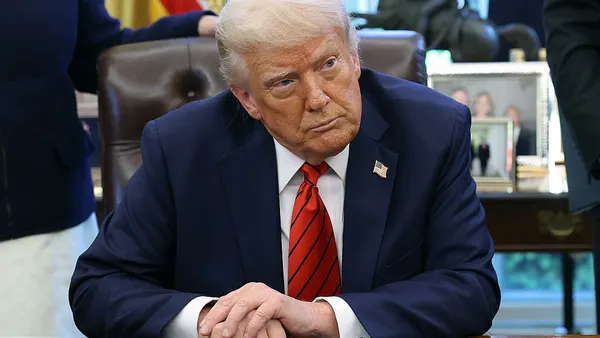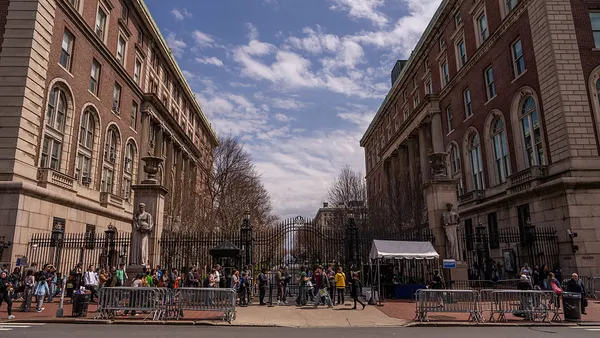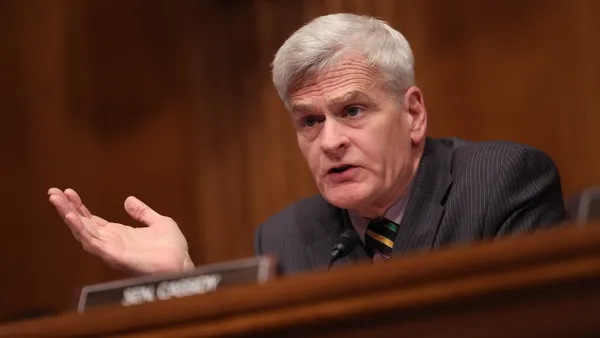Dive Brief:
- Former U.S. Equal Employment Opportunity Commission Chair and Commissioner Charlotte A Burrows will be represented by Lisa Banks and Debra Katz — the same attorneys who represented Christine Blasey Ford —Katz Banks Kumin announced Jan. 28, the day after President Donald Trump dismissed Burrows from the EEOC.
- Burrows, a Democrat, was first appointed in 2015. She served as chair from January 2021 through January 2025 and was recently confirmed to a third term expiring in July 2028, she stated in a KBK press release. Former EEOC Commissioner Jocelyn Samuels and former General Counsel Karla Gilbride, Democrats appointed to terms ending in 2026 and 2027, respectively, were also fired.
- “Removing Commissioner Burrows from her position, a full three and a half years before the expiration of her term at the EEOC, is just the latest political attack we have seen from President Donald Trump in his coordinated effort to strip-mine the federal government,” Banks said in the announcement.
Dive Insight:
Katz and Banks, KBK founding partners, are no strangers to high-profile cases. In addition to representing Blasey Ford, who came forward with allegations of sexual assault against Supreme Court Justice Brett Kavanaugh during his confirmation hearing, the firm has represented clients bringing charges against John Falcicchio, the former deputy mayor of Washington, D.C., and 40 former employees of the Washington Commanders, among others.
As of press time, Katz and Banks have not said how they will proceed in representing Burrows.
But statements Samuels posted on X pointed to a likely approach: “More than 60 years ago, Congress created the EEOC as a bipartisan, independent agency, no more than three of whose members can belong to the same political party,” she wrote.
“Removing me from my position before the expiration of my Congressionally directed term is unprecedented, violates the law and represents a fundamental misunderstanding [that the EEOC is] not controlled by a single Cabinet secretary,” Samuels said.
Title VII of the Civil Rights Act of 1964 created the five-member board and specifies that EEOC commissioners serve for fixed five-year terms, Seyfarth Shaw attorneys Rachel See and Andrew Scoggins wrote in a Jan. 28 post.
With Burrows’ and Samuels’ removals, Republican appointee Andrea Lucas, now serving as acting chair, and Kalpana Kotagal, a Democrat serving as commissioner, are currently the only EEOC board members.
With only two commissioners, the EEOC is left without a quorum and restrained from rulemaking or issuing or rescinding formal guidance, although Acting Chair Lucas announced last week that pursuant to President Trump’s Executive Order 14168 on gender ideology, the EEOC is “rolling back” the Biden administration’s “gender identity agenda.”
Lucas also indicated that the EEOC’s 2024 enforcement guidance on harassment and its strategic plan for 2022-2026, whose interpretations and priorities she has publicly opposed, are likely to be on the chopping block once the vacancies are filled and a quorum is possible.
The EEOC is charged with enforcing federal employment civil rights laws. President Trump’s actions will not only significantly weaken the agency’s functioning, they will weaken “protections afforded American workers in workplaces across the country,” Banks stated.
Regarding the legal issues here, federal law gives the U.S. president the authority to appoint EEOC commissioners, “by and with the advice and consent of the Senate,” the law firm Sullivan & Cromwell noted in a Jan. 30 blog.
However, there is no provision in Title VII that allows the president to remove a commissioner “for cause,” the Seyfarth post said.
President Trump’s firing of Burrows and Samuels, along with his removal of National Labor Relations Board General Counsel Jennifer Abruzzo and NLRB board member Gwynne Wilcox, appear designed to test and potentially expand president powers, See and Scroggins noted.
This would include giving the president unrestricted authority to remove executive branch officers, the attorneys observed.
In particular, litigation could eventually lead the U.S. Supreme Court to revisit and potentially overturn Humphrey’s Executor v. United States, a 1935 SCOTUS ruling that upheld “Congress’s power to create independent boards and commissions whose members the President could not remove at will,” See and Scroggins wrote.


